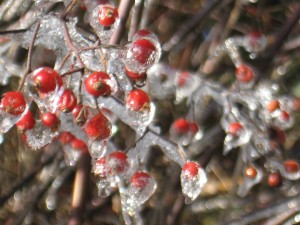Now that we’ve had our first lasting snow this season, it’s time to break out the guidelines for cold preparation. We’ve had a very mild fall, and that’s saved on the fuel bills and certainly kept spirits up. But this is Maine, and it’s winter. Being prepared is the best way to ensure that you can enjoy (or at least tolerate) the quiet that comes from being at home without electricity, which is often what creates a cold emergency.
Especially this time of year, when snowfalls are wet (and heavy) it’s good to plan for a few days without electricity. Here are some steps you can take now to prepare your home:
- Decide on an alternate way to heat your living space in case of a power failure. Bring in some extra wood for the woodstove or fireplace, or make sure you have kerosene for the heater. Some people get small generators that can keep the refrigerator going, power an electric heater or keep the hopper moving on the pellet stove. Having a plan in place, and all the pieces accounted for, will lead to peace of mind.
- Remember that elders have a more difficult time regulating body temperature. Wear a hat, keep several layers on, make sure your feet are warm, and don’t hesitate to cover up when you’re sitting still and reading or listening to the radio.
- Make sure you have a flashlight with WORKING BATTERIES. And crank-type rechargable flashlights are also good. With the advent of “lantern” type flashlights that work for hours, I don’t advocate candles. It’s just too easy to forget and leave one burning, and much too easy for folks to catch a bulky sweater or fleece on fire.
- Get a battery powered or crank radio.
- Make sure the kitchen has a non-electric can opener for items like tuna, that taste good cold. Other foods that need no cooking or preparation include peanut butter, crackers, cereal and dried fruits. Explore the grocery aisles now for chicken, salmon and other meats in packages that don’t require refrigeration.
- Remember any medications.
- Store some bottled water. At my house, we use gallon milk containers, clean and refill them and put them in the cellar. Since our pump doesn’t work without electricity, it’s handy to have water for washing, flushing and watering the chickens. You should count on 5 gallons per person per day. (I also buy and store the water we need for drinking and cooking.)
- If your house can’t be prepared for a winter emergency, make sure you have a back-up plan in place. Make plans now with a family member, neighbor or friend, or know where your local winter storm shelter is, what you’ll need to take, and how you’ll get there.